
Lucius III
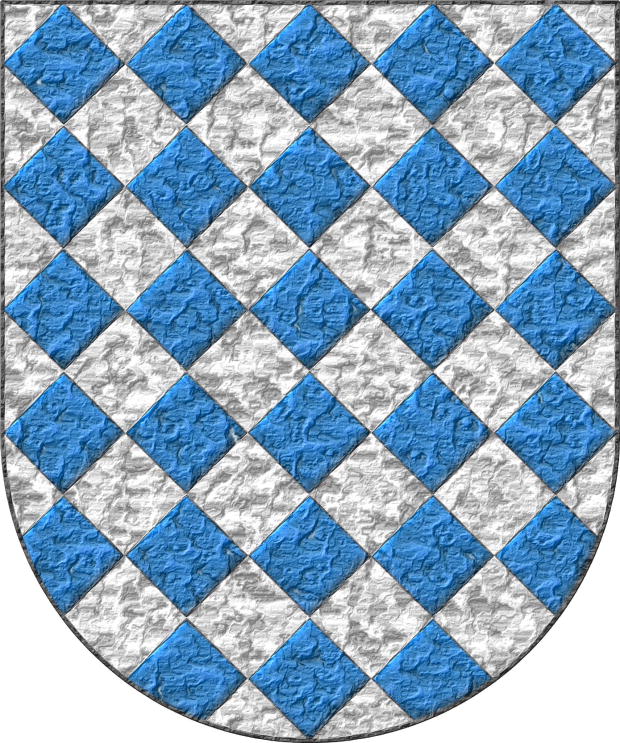
171st Pope of the Church, from the year 1181 to the year 1185. «Lucius III», born Ubaldo Allucinoli, was born in Lucca in northwest Italy.
Lozengy Argent and Azure.
Escudo losanjado de plata y azur.
Papal coat of arms interpreted by me with: a semicircular shield shape; a plain Argent field; checky or squares illuminated in Azure and outlined in Sable; and the whole design with a watercolor finish.
Blazon keywords: Without divisions, Lozengy, Argent and Azure.
Style keywords: Semi-circular, Illuminated, Outlined in sable and Hard metal.
Classification: Interpreted, Religious and Papal States.
Bearer: Lucius III.


Innocent IV
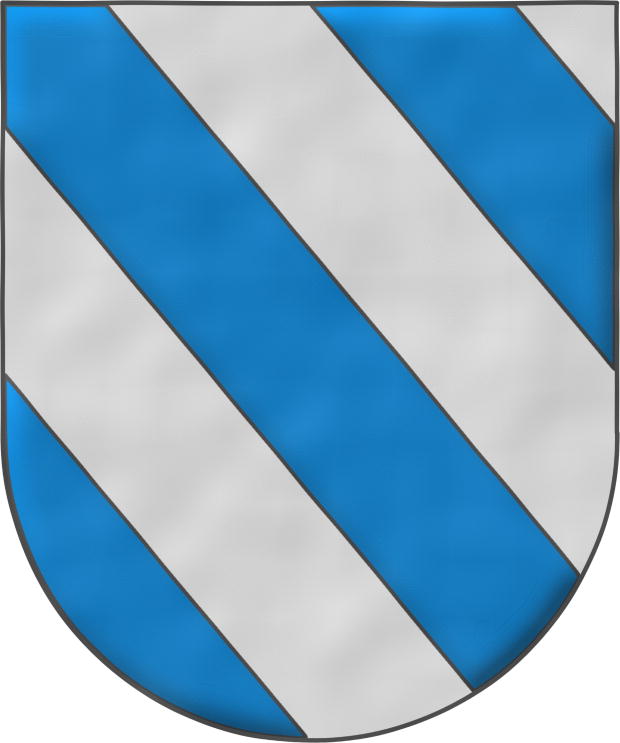
180th Pope of the Church, from 1243 to 1254. «Innocentius IV», born Sinibaldo dei Fieschi, was born in Manarola in northwest Italy.
Bendy of six Azure and Argent.
Escudo bandado de seis piezas de azur y plata.
Papal coat of arms interpreted by me with: a semicircular shield shape; a plain Argent field; bands illuminated in Azure and outlined in Sable; and the whole design with a watercolor finish.
Order of tinctures
In the bendy pattern, the tinctures are named starting from the one located at the dexter base of the shield and following an ascending sequence towards the sinister chief, although the most orthodox approach is to have only 2 tinctures, being one color and one metal.
Number of bands
It is said that it is not necessary to specify the number of bands when there are precisely 6, as in this case, and that it should be specified when there are, for example, 4 or 8. I have chosen to specify it for greater clarity of the blazon.
About the bendy pattern and the need to specify or not specify the number of its pieces, [Avilés, J.; 1725a; pages 40 and 41] and [Avilés, J.; 1780a; pages 45 and 46] say that it is «composed of four, six, or eight bends; in such a way that there are as many colors as metals, always specifying the number four and eight bands when blazoning, and not the one composed of six, as it is understood thus, without declaring the number of pieces» and without agreeing with it, and by its wording I believe that he is not entirely in agreement either, he adds «the reason that may exist for not specifying the number of six bends (although the authors do not express it) is that as the bend is one-third of the shield; and having six pieces, or six bends, the resulting number is doubled, as if the three parts were divided, which implies that the shield is filled with three bends; and taking the denomination of the figure infers, that the bendy is of six pieces: which does not happen with this equality in those of four and eight, requiring other proportions and consequently it becomes necessary to specify their number», therefore, note that the bendy of 6 does not follow the proportions of the bend, nor do those of 4 or 8, the only differential property of the one of 6 is being a multiple of 3, being 1/3 the width of the bend.
Blazon keywords: Without divisions, Bendy, Six, Azure and Argent.
Style keywords: Semi-circular, Illuminated, Outlined in sable and Watercolor.
Classification: Interpreted, Religious and Papal States.
Bearer: Innocent IV.


Urban IV
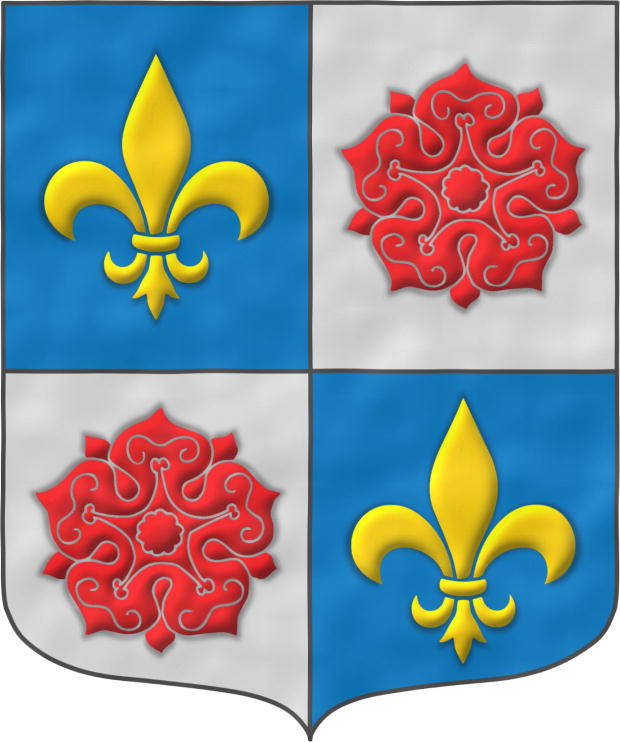
182nd Pope of the Church, from 1261 to 1264. «Urbanus IV», born Jacques Pantaleon of Court-Palais, was born in Troyes, France.
Quarterly: 1 and 4 Azure, a fleur de lis Or; 2 and 3 Argent, a rose Gules.
Escudo cuartelado: 1o y 4o de azur, una flor de lis de oro; 2o y 3o de plata, una rosa de gules.
Coat of arms of Urban IV with: a pointed and rounded shield shape; the field in plain Azure and Argent enamels; the figures outlined in the field, shaded and illuminated in Or and Gules; and with a watercolor finish.
Blazon keywords: Quarterly, Azure, One, Fleur de lis, Or, Argent, Rose and Gules.
Style keywords: Ogee, Illuminated, Shaded, Outlined in the field tincture and Watercolor.
Classification: Interpreted, Religious and Papal States.
Bearer: Urban IV.


Gregory X
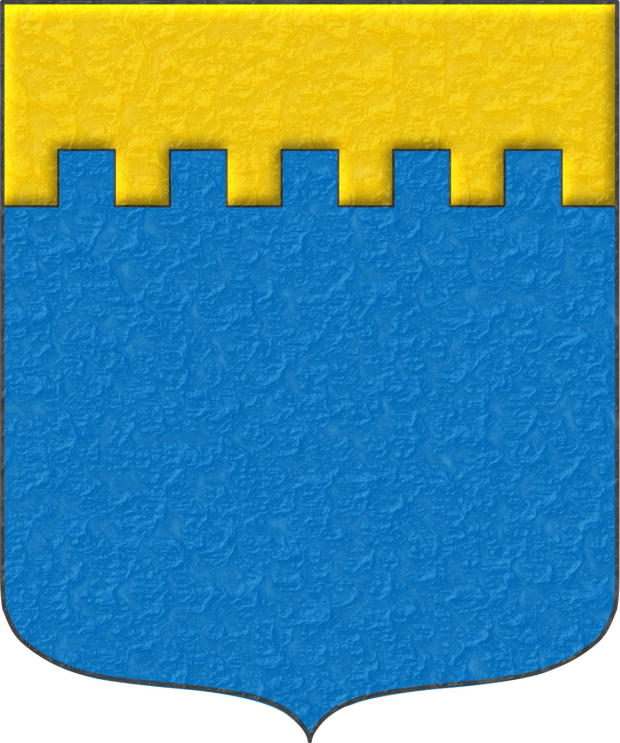
184th Pope of the Church, from 1271 to 1276. «Gregorius X», born Teobaldo Visconti, was born in Piacenza and convened the 14th Ecumenical Council, known as the Second Council of Lyon.
Azure, a chief embattled Or.
Escudo de azur, el jefe almenado de oro.
Papal coat of arms interpreted by me with: a pointed and rounded shield shape; the field in plain Azure; the chief embattled, illuminated in metal Or and outlined in Sable; and the whole with a marbled finish.
My first version of the blazon in English was «Azure, a chief Or, embattled», but Michael McCartney suggested that it was more correct as «Azure, a chief embattled Or».
Blazon keywords: Without divisions, Azure, Chief, Or and Embattled.
Style keywords: Ogee, Illuminated, Outlined in sable and Marmoreal.
Classification: Interpreted, Religious and Papal States.
Bearer: Gregory X.


Adrian V
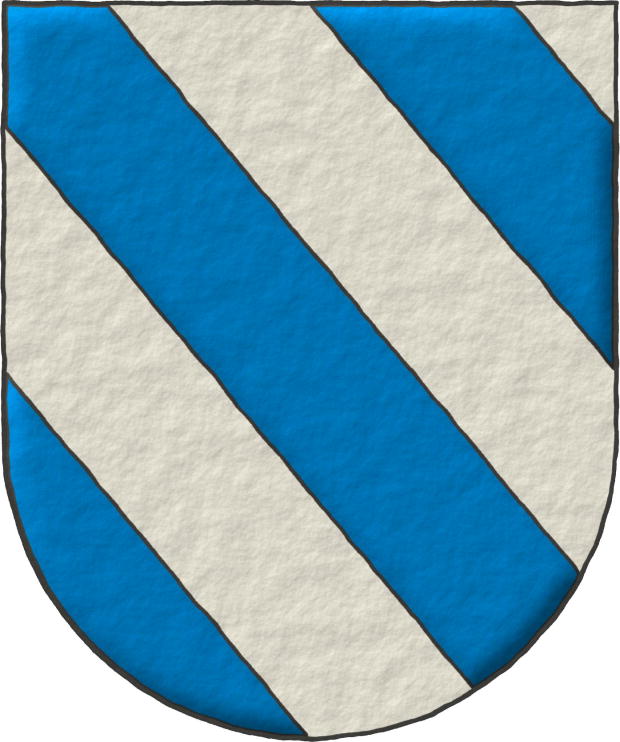
186th Pope of the Church, only 40 days in 1276. «Hadrianus V», born Ottobuono de Fieschi, was born in Genoa.
Bendy of six Azure and Argent.
Escudo bandado de seis piezas de azur y plata.
Papal coat of arms interpreted by me with: a shield with a rounded arch top; the field in plain tincture of Argent; the bands illuminated in Azure and outlined in Sable; and the whole in an elevated line style.
The blazon in French is «Bandé d'azur et d'argent de six pièces».
The banding is defined in [Avilés, J.; 1725a; page 40] and [Avilés, J.; 1780a; page 45] as the shields and also, the chiefs, fesses, pales, and figures, such as animals, etc., that are «covered and filled with bands in equal number, with as many of metal as of color».
Blazon keywords: Without divisions, Bendy, Six, Azure and Argent.
Style keywords: Semi-circular, Illuminated, Outlined in sable and Freehand.
Classification: Interpreted, Religious and Papal States.
Bearer: Adrian V.


John XXI
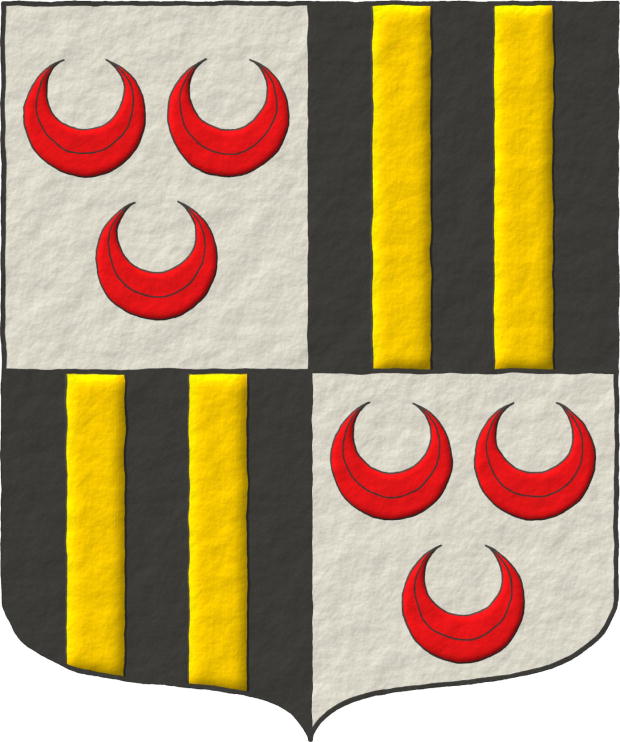
187th Pope of the Church, from 1276 to 1277. «Johannes XXI», born Pedro Julião, also known as Pedro Hispano, born in Lisbon, Portugal.
Quarterly: 1 and 4 Argent, three crescents Gules; 2 and 3 Sable, two pallets Or.
Escudo cuartelado: 1o y 4o de plata, tres crecientes de gules; 2o y 3o de sable, dos palos de oro.
Coat of arms with: a shield with a pointed and rounded top; the field in plain Argent and Sable; the figures outlined in Sable and illuminated in Gules and Or; and the whole in an elevated line style.
John XXI should have actually been John XX, but Cardinal Pedro Julião, upon being elected pope, decided to skip the number XX and called himself John XXI, with the aim of correcting what was believed to be a historical error, which in the end was not so.
This historical error consisted of the belief in the existence of 2 popes named John XIV, as seemed to be deduced from the records of the «Liber Pontificalis». They were therefore referred to as: the 1st John XIV and the 2nd John XIV bis.
By skipping the number XX, John XXI believed he was correcting this historical error. But the reality is that there was only one Pope John XIV, the same pope with 2 entries in the «Liber Pontificalis», the 1st entry during the time of his pontificate in freedom and the 2nd entry for the time he exercised his pontificate in prison, imprisoned by his enemy, the so-called «antipope» Boniface VII, who, in turn, managed to occupy the papal throne twice, separated by a decade, in 974 and in 984, somewhat like a double «antipope».
Therefore, John XXI, instead of correcting a historical error, made one, and for this reason, there is no Pope John XX in all of history, nor can there ever be one.
Blazon keywords: Quarterly, Argent, Three, Crescent, Gules, Ordered, Sable, Two, Pale and Or.
Style keywords: Ogee, Illuminated, Outlined in sable and Freehand.
Classification: Interpreted, Religious and Papal States.
Bearer: John XXI.


Clement V
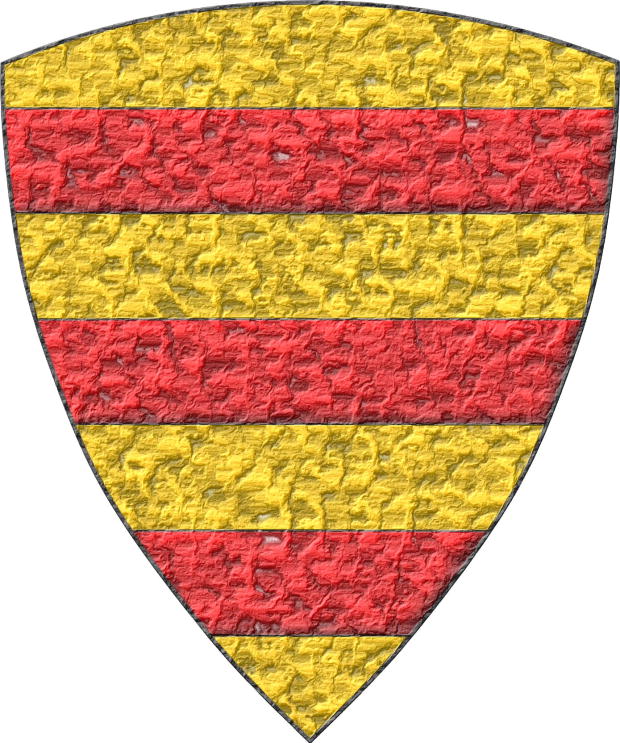
195th Pope of the Church, from 1305 to 1314. «Clemens V», born Bertrand de Got, born in Villandraut, in the southwest of France, was the first pope to reside in Avignon in a stable manner.
Or, three fesses Gules.
Escudo de oro, tres fajas de gules.
Papal coat of arms interpreted with: a rounded triangular top; the field in plain Or enamel; the bars illuminated in Gules and outlined in Sable; and with a heavily hammered metal finish.
Blazon keywords: Without divisions, Or, Three, Fess and Gules.
Style keywords: Triangular curved, Illuminated, Outlined in sable and Hard metal.
Classification: Interpreted, Religious and Papal States.
Bearer: Clement V.
Blazon equivalent to: Fernández de Córdoba y Carrillo, Diego.


Benedict XII
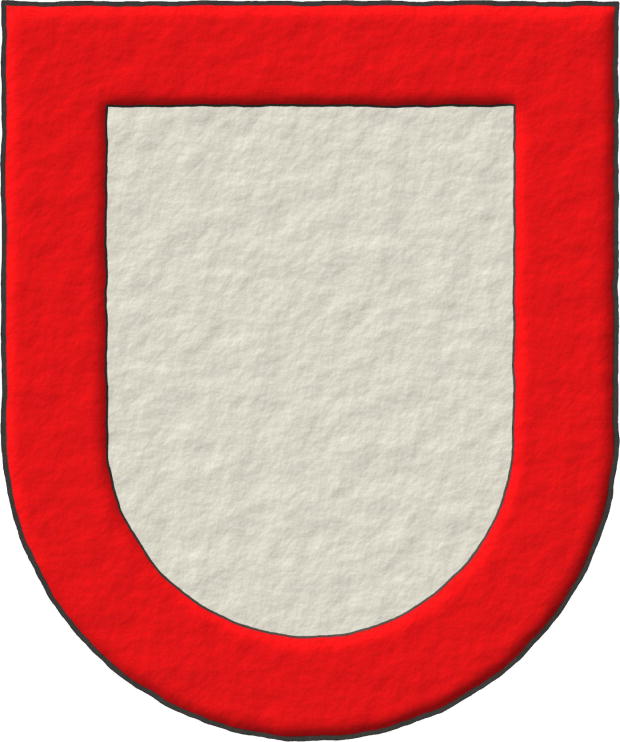
197th Pope of the Church, from 1334 to 1342. «Benedictus XII», born Jacques Fournier, was born in Saverdun, in the south of Occitania.
Argent, a bordure Gules.
Escudo de plata, una bordura de gules.
Papal coat of arms interpreted with: a round-topped shield; the field in plain Argent; the bordure outlined in Sable and illuminated in Gules; and the whole design in raised outline.
Blazon keywords: Without divisions, Argent, One, Bordure and Gules.
Style keywords: Semi-circular, Illuminated, Outlined in sable and Freehand.
Classification: Interpreted, Religious and Papal States.
Bearer: Benedict XII.

Continue with: Urban V.
-
Language
-
Categories of heraldry
-
Divisions of the field
- Without divisions
- Party per pale
- Party per fess
- Party per bend
- Party per bend sinister
- Tierce
- Tierce sinister
- Tierced per fess
- Tierced per bend
- Tierced pallwise inverted
- Quarterly
- Quarterly per saltire
- Gyronny
- Party per fess, the chief per pale
- Party per pale, the sinister per fess
- Party per fess, the base per pale
- Party per pale, the dexter per fess
- Chapé
- Chaussé
- Party per chevron
- Enté en point
- Flanched
-
Metals
-
Colours
-
Furs
-
Other tinctures
-
Ordinaries and sub-ordinaries
-
Diminutives of the ordinaries
-
Other charges
-
Charges from Nature
Water, Eagle, Bald eagle, Eagle claw, Dorsal fin, Tail fin, Two hands clasped, Lark, Tree, Trunk, Rainbow, Atom, Barbel, Acorn, Bighorn sheep, Arm, Owl, Vulture, Horse, Head, Goat, Camellia, Thistle, Merino ram, Kapok tree, Stag, Doe, Crescent, Increscent, Chrysanthemum, Tail, Tail addorsed, Ermine spot, Hummingbird, Snowflake, Heart, Roe deer, Neck, Roe deers' attires, Raven, Dolphin, Diamond, Tooth, Elephant, Emerald, Starling, Mullet, Mullet of four points, Star of David, Estoile, Male figure, Fleur de lis, Flower, Cornflower, Dogwood flower, Lotus flower, Hop cone, Bluebonnet, Puffin, Ash, Rooster, Claw, Talon, Goose, Heron, Seagull, Pomegranate, Sunflower, Swallow-tail, Falcon, Leaf, Boar, Goldfinch, Laurel, Barn owl, Lion, Lioness, Lion passant, Leopard, Lion rampant guardant, Lynx, Lily, Madonna lily, Flame, Wolf, She-wolf, Parrot, Moon, Hand, Apple, Apple tree, Martlet, Wing, Two wings in vol, Covert, Blackbird, Mount, Trimount, Fly, Wrist, Elm, Olive tree, Orbital, Bear, Palm frond, Palm tree, Dove, Poplar leaf, Panther, Jaguar, Vine, Paw, Forepaw, Foot (palmiped), Foreleg, Peacock, Chest, Pelican, Pelican in her piety, Dog, Brach hound, Warren hound, Fish, Hoof, Beak, Quill, Cinquefoil, Quetzal, Branch, Sprig, Frog, Shamrock, Caboshed, Oak, Holm oak, Rose, Double rose, Savage, Serpent, Plough of Ursa Major, Sun, Sun in splendour, Ray of the sun, Lightning flash, River, Stem, Badger, Tyger, Linden, Wheat, Wheat spike, Bull, Tulip, Udder, Escallop and Fox.
-
Artificial charges
Halberd, Plough share, Ace of spades, Anchor, Cyclamor, Torch, Bow, Arch, Harp, Non-classic artifact, Winnowing fan, Crozier, Conductor's baton, Pair of scales, Ship, Norman ship, Beret, Grenade, Ecclesiastical cap, Arm vambraced, Knight, Chain, Covered cup, Monstrance, Bell, Bell tower, Cannon dismounted, Carbuncle, Castle, Ribbon, Clarion, Nail, Cord, Dagger, Key ward, Turret, With a turret, Armillary sphere, Sword, Federschwert, Sabre, Parchment, Scroll, Arrow, Club, Garb, Sheaf of tobacco, Scythe, Gauntlet, Axe, Buckle, Galician granary, Polish winged hussar, Church, Oil lamp, Spear, Spear's head, Fleam, Letter, Book, Open book, Closed book, Bookmark, Page, Line, Lantern, Key, Four crescents joined millsailwise, Hammer, Menorah, Mortar, Pestle, Number, Knot, Celtic Trinity knot, Water-bouget, Comb, Piano, Millstone, Millrind, Millwheel, Clay pot, Bridge, Cuffed, Hourglass, Chess rooks, Compass rose, Rosette of acanthus leaves, Mullet of six points pierced, Broken, Portcullis, Wheel, Wagon-wheel, Symbol, Sackbut, Drum, Geometric solid, Tetrahedron, Tower, Trident, Trumpet, Double vajra and Anvil.
-
Immaterial charges
Angel, Archangel, Heart enflamed, Sacred Heart of Jesus, Paschal lamb, Dragon, Wyvern, Phoenix, Garuda, Griffin, Sea-griffin, Winged hand, Our Lady of Mercy, Pegasus, Saint George, Mermaid, Trinity, Triton, Golden fleece, Unicorn and Ouroboros.
-
External elements
-
Heraldic creations
-
References
-
Formats
-
Keywords on this page
Watercolor, Adrian V, Embattled, Azure, Bendy, Benedict XII, Bordure, Clement V, Ogee, Crescent, Quarterly, Outlined in sable, Outlined in the field tincture, Two, Dancetty, Papal States, Fess, Fleur de lis, Gregory X, Gules, Illuminated, Innocent IV, Interpreted, Chief, John XXI, Lozengy, Lucius III, Marmoreal, Semi-circular, Metal beaten, Hard metal, Ordered, Or, Pale, Argent, Without divisions, Religious, Rose, Sable, Six, Shaded, Freehand, Three, Triangular curved, One, Urban IV and Urban V.